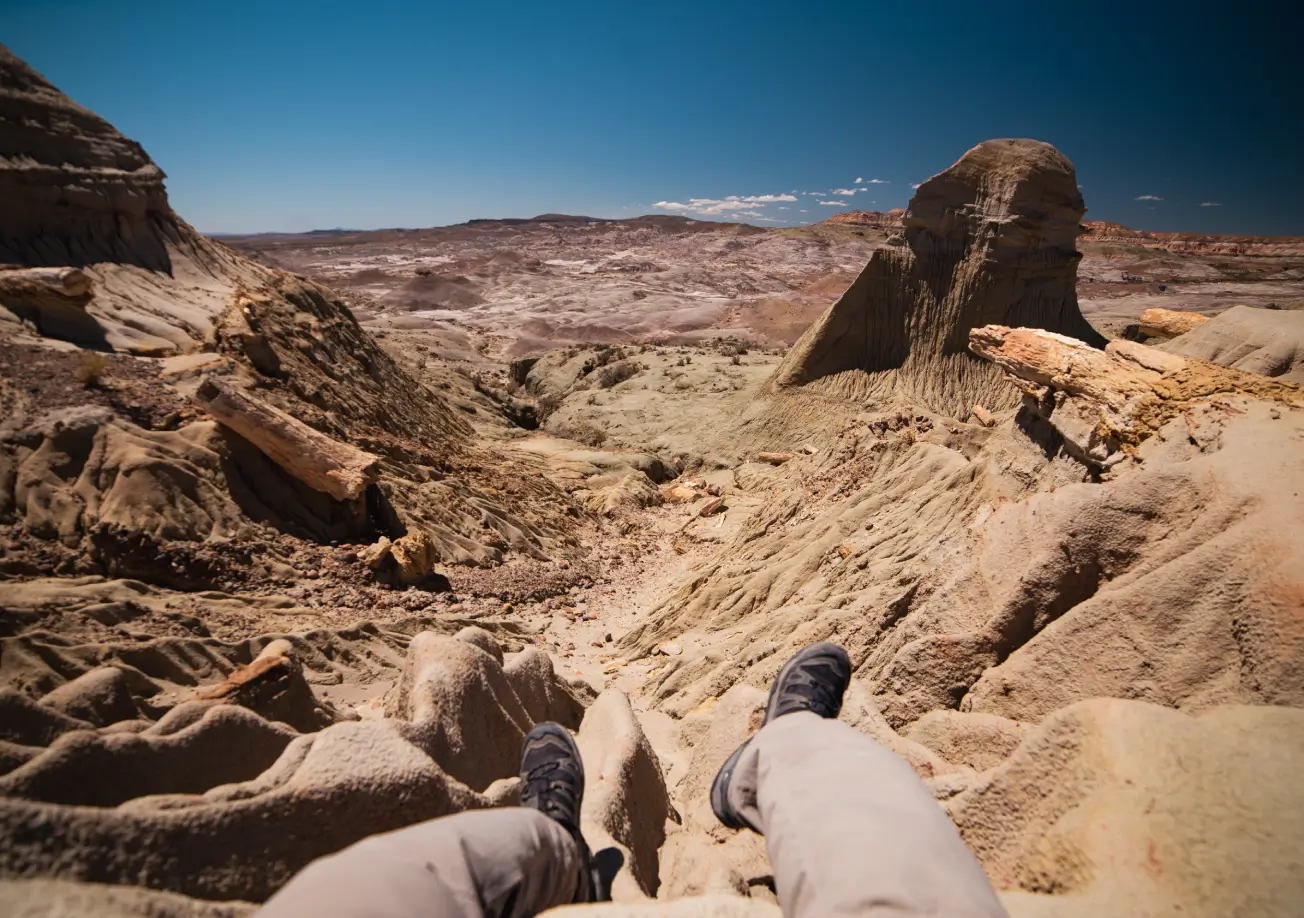
Petrified Forest – Sarmiento
- By amadorjose
🪨 A journey to the Jurassic among stone trunks and lunar landscapes
Just 30 km from Sarmiento, in the heart of the Patagonian steppe, lies one of Argentina’s most remarkable fossil deposits: the Petrified Forest, a protected area preserving trees turned to stone for over 65 million years.
This extraordinary site offers a unique journey through an almost otherworldly landscape, where ancient forests fossilized after volcanic eruptions and millennia of sedimentation. Today, visitors walk among fallen and fragmented trunks, up to 30 meters long, transformed into mineral sculptures.
⛏️ Why visit the Petrified Forest?
An open-air museum: Declared a Provincial Natural Monument, this site allows visitors to observe fossilized trunks in situ, without display cases, where the passage of time can be perceived with astonishing clarity.
Interpretive trails: The guided circuit (approximately 2 km) includes informative panels and the company of local guides who recount the site’s geological history, the types of flora from the period, and the petrification process.
Otherworldly landscapes: The contrast between the white rock, the fossils, and the endless steppe creates a surreal setting, ideal for photography and contemplation. The site is also excellent for spotting birds and steppe wildlife.
Accessible for all: This excursion is suitable for all audiences, with no need for demanding physical preparation. Ideal for families, school groups, cultural tourists, and geology enthusiasts.
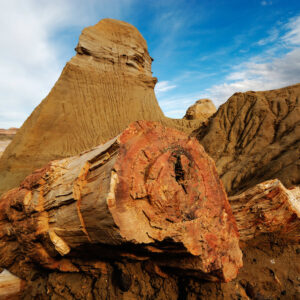
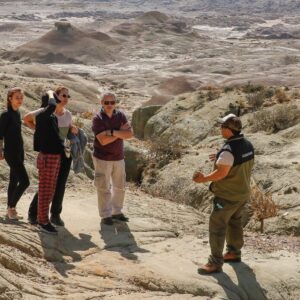
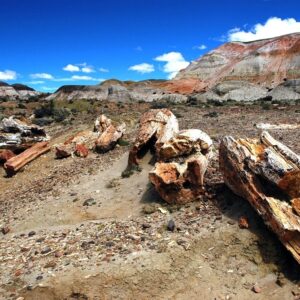
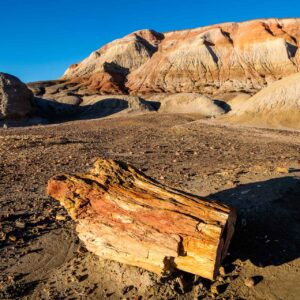
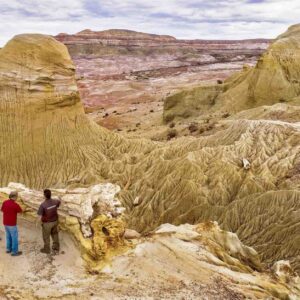
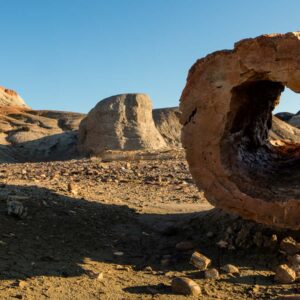
🧭Practical information
Access: From Sarmiento via Provincial Route 27 (compacted gravel). Estimated time: 30 minutes by car or organized tour.
Hours and services: The protected area has an information center, restrooms, and marked trails. Open daily during the high season.
Ideal season: From October to April. It is recommended to visit in the morning or afternoon to avoid midday heat.
What to bring: Comfortable footwear, sun protection, water, and a camera. The extraction of fossils and touching the specimens is not allowed.
Recommended for: Paleontology enthusiasts, curious travelers, nature photographers, and anyone interested in the planet’s deep history.